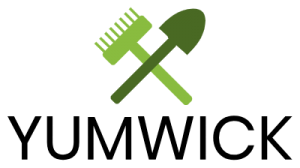Imagine that you are on your dining table to relish that succulent, properly cooked steak, its special fragrance luring your taste receptors to cherish every bite. You grab the steak knife, expecting to enjoy everything which turns a steak excellent in just a cut, yet your knife had other ideas: either it doesn’t slice it or shreds through it, spilling its delicious juices on the plate.
Have a quick look at the steak knife you’re using and question yourself if it has the perfect blade for the task before criticising the chef or the meal. If the response is a big “No!” then this is time to shop our wide variety of top brand steak knives.
How to Pick a Steak Knife
If you’re looking for a steak knife, you would certainly come across several sizes and shapes, as well as blade variations. Usually, individuals identify steak knives simply by searching for serrations upon that cutting edge, yet others may have spent their entire lives assuming that serrated steak knives can cut better as well as stay sharp for a longer period. However, it isn’t always the case.
Let’s have a look at both serrated vs. non-serrated blade arguments before you start looking for the finest steak knives.
Serrated Steak Knives
Serrated blades are always the most popular option for steak knives. Scallops, often known as gullets, run down the cutting edge on a serrated blade for cutting through foodstuffs with a hard outside but softer interior.
Serrated knives seem to be perfect for bread like boules, Baguettes as well as other crunchy loaves because the scalloped edge enables for a neat, flawless cut.
Are serrated steak knives, on the other hand, really preferable? It is truly a subjective thing.
Serrated steak knives are popular because they provide the impression of sharpness. Because the edges within the scallops rarely meet the plates when slicing through the meal, people assume serrated edges create a blade sharper that will remain sharp for longer than blades with straight-edge. Although this is somewhat correct, serrated knives become far more challenging to sharpen, plus they normally require the services of an expert to keep them sharp.
Sharpening Serrated Blades
Serrated knives don’t have equal bevels, meaning one end is thinner as compared to the other, generally the scalloped edge, so each serration should be honed individually.
In respect of honing equipment, the most popular tool for keeping serrated blades would be a ceramic honing rod, which does not truly sharpen but instead hones the blade. Because of their predetermined angles and increased risk of breaking the cutting edge, electric knife sharpeners must be avoided while honing serrated blades. Whetstones could be utilised, although they’re best for honing the blade’s straight edges.
Non-Serrated Steak Knives
Non-serrated steak knives, often referred to as straight-edge knives, have a sharp edge that cuts the meats without breaking the fibres. It ensures your cut will be considerably smoother and cleaner. Such clean slices are preferred by steak connoisseurs because they hold the meat’s delicious juices inside with every slice instead of dripping onto the dish.
Straight edge steak knives have only one disadvantage: they should be sharpened frequently because they are typically utilized on really tough cutting surfaces such as ceramic plates.
They are, however, far simpler to hone as compared to serrated steak knives, but one must understand the knife’s parameters, like the geometry of the edges and the steel type used to make the blade. After that, you would need to spend some time learning how to hone them properly.
Sharpening Non-Serrated Steak Knives
Sharpening straight edge steak knives are similar to sharpening any other blade; however, how to hone knives effectively is a form of art that requires a lot of effort and the correct equipment to get your blades back to their good condition. Once you’ve mastered the method, whetstones and sharpening rods are fine.
However, electric knife sharpeners should be avoided since they are constrained in the sorts of knives they could hone, and its fixed angles and honing holes make it easier to deform the blades by removing more steel than is required.
Conclusion
To summarise, both knives offer unique features, and you can have both or choose one based on your preferences.
